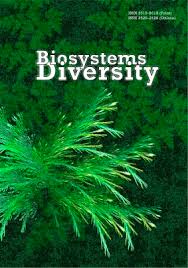Phytoplankton of the delta of the Mekong River during the dry season
Phytoplankton of the delta of the Mekong River during the dry season
Author(s): A. N. Sharov, A. I. Tsvetkov, L. G. Korneva, C. N. DinhSubject(s): Energy and Environmental Studies, Sociobiology
Published by: Дніпропетровський національний університет імені Олеся Гончара
Keywords: potamoplankton; biomass; species composition; dominating species; Vietnam; abiotic factors; estuary;
Summary/Abstract: Human activity has disturbed the functioning of river ecosystems all around the globe. The current global climatic fluctuations and local anthropogenic impact lead to rearrangement in the structure and functioning of aquatic communities. One of the most important components of aquatic ecosystems is phytoplankton as the main primary producer of the organic matter, the basis for trophic relations and indicator of changes in the environment. This article presents the first results of a study concerning the peculiarities of quantitative distribution of biomass and species composition of phytoplankton in the delta of the Mekong River at the beginning of the dry season (December of 2018). Diatoms dominated according to biomass practically in all the stations of selection of samples. The total biomass of phytoplankton on average accounted for 0.049 ± 0.007 mg/L at the abundance of 40 ± 7 103 ind./L. In practically all the studied plots, according to biomass, the dominating diatoms were first of all Aulacoseira granulata, A. islandica, Cyclotella meneghiniana, Cyclotella spp., and Oxyneis binalis. Among Chlorophyta, most often we found Chlorella sp. and Scenedesmus quadricauda, but their biomass was insignificant. We determined statistically significant correlation relationships between biomass of phytoplankton and hydrological parameters. Based on the Spearman’s rank correlation coefficient, we determined negative relations between the total biomass of phytoplankton with salinity and pH. Positive correlation was seen between the biomass of diatoms and turbidity, and also between the temperature and the biomass of chlorophytes and Dinophyta. The biomass of golden algae (Chrysophyceae) and Dinophyta positively correlated with the mineralization. Quantitative regression analysis confirmed the close relationship between the total biomass of phytoplankton, hydrophysical and hydrochemical parameters. Besides the importance of scientific data on biological diversity and ecology of plankton algae, the results we obtained are necessary for organizing biological monitoring in the delta of the Mekong River in the future.
Journal: Biosystems Diversity
- Issue Year: 28/2020
- Issue No: 3
- Page Range: 329-334
- Page Count: 6
- Language: English

